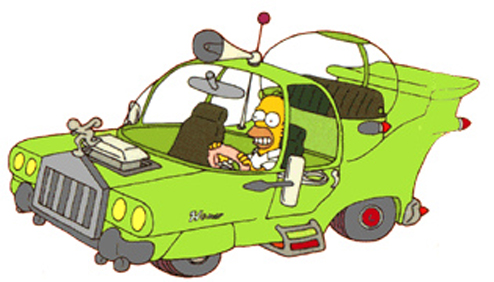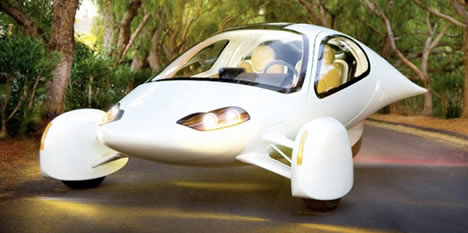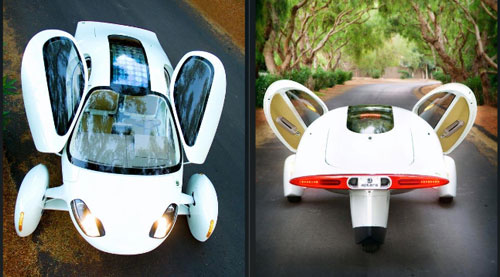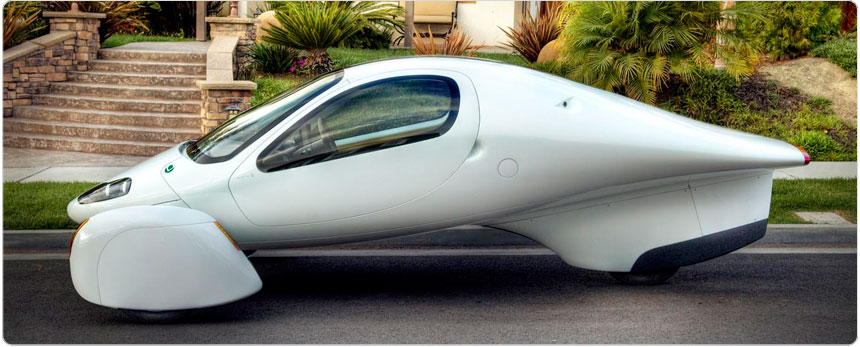I’ve written before about frames of reference. That’s the term I use (borrowed from physics) for how we can perceive situations around us differently from others due to differences in context. When building products, our frame of reference when defining priorities is based on previous experience, our objectives and our understanding of (or lack thereof) the target market or user who will ultimately use the product. Lacking any real understanding of the target audience, we default to our own needs and assume (or hope) they apply to others.
In an episode of the cartoon series The Simpsons, Homer Simpson’s long lost half-brother Herbert is the owner of a successful car company. He asks Homer to design the company’s next car; a car for the average family, just like the Simpsons. Homer asks for a number of features on the car:
- A giant sized drink holder for those “super-slurpers at the Kwik-E-Mart”
- Tail fins, bubble domes and shag carpeting because “they never go out of style!”
- Multiple horns that all play ‘La Cucaracha’ because “you can never find a horn when you’re mad”
- A separate soundproof bubble “for the kids with optional restraints and muzzles”
- With an engine “powerful like a gorilla, yet soft and yielding like a Nerf ball”
Think this kind of thing only happens in cartoons? While I haven’t seen anything as truly hideous as this car in real life, I recently came across an example of a car that was built by engineers, and apparently for engineers. It’s called the Aptera, and it is an actual electric and hybrid vehicle that is meant for production, with a list price of about $30,000.
The shape of the Aptera is designed to minimize wind resistance. In fact, if you visit their website, you’ll get a brief lesson in aerodynamics and drag. Do I need to know that as a car buyer?
Note the doors are gull-wing in design, but the door windows are fixed. You can’t open them. So much for using any drive through service such as a bank machine or fast food restaurant or toll booth!
And looking at it from the side, imagine the huge blind spots the driver will have both on the passenger as well as driver side. Note that none of the photos above show external rear-view mirrors on the car, but apparently they have added those to the vehicle. There is also a rear view camera system that is meant to minimize the blind spots, but that seems like a workaround IMHO. They’ve optimized for aerodynamics and now need to add features to address usability problems they’ve created.
Now, this vehicle isn’t all bad. It is claimed that the hybrid model will get 300 miles per gallon of gas. Amazing achievement if it’s true, though with crude oil currently trading well under $50 per barrel, extreme fuel efficiency isn’t at the top of everyone’s list right now.
Second it has a number of interior features including:
- 2 cup holders (the car seats two people)
- smart phone connectivity
- driver and passenger airbags
- side impact beams
- solar assisted climate control
So, it’s not as hideous as the Homer — no horns playing ‘La Cucaracha’ — but it’s an example of what can happen when products are designed with the wrong frame of reference. 300 MPG is great, but you know what, I’d take 150 or even 100 MPG and a lot more usability.
Aptera, if you are listening — change is a process. Your intentions are great, but there are a lot of changes you’re imposing on your users. The path to success is helping address our problems without requiring us to completely change our frame of reference.
Saeed



